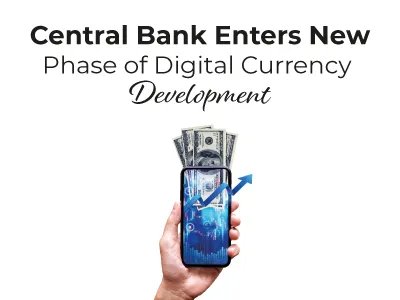
Central Bank Enters New Phase of Digital Currency Development
Many monetary authorities worldwide seek more guidance on tracking digital forms of central bank money. If Central Bank Digital Currencies are designed appropriately, they will likely create improvements not only in payment systems but also in financial inclusion. Otherwise, they may pose a severe risk.
Although countries can implement a Central Bank Digital Currency (CBDC) after some time, many countries are exploring CBDCs and plan to implement the system if it becomes available to them in the future. It is stated that the benefits on the subject will emerge over time by following the policies followed by the countries, the reaction of the private sector, and the development of technology.
In her recent speech at the Singapore Fintech Festival, IMF Managing Director Kristalina Georgieva noted that it would be helpful for countries to continue to explore CBDC carefully and systematically in many situations. The Bahamas, Jamaica, and Nigeria have already introduced CBDCs, while more than 100 countries are in the exploration phase. In addition, central bankers in Brazil, China, the Eurozone, India, and the United Kingdom are at the forefront.
The IMF recently created a virtual CBDC, or Virtual Handbook, to provide a basis for gathering and sharing information with policymakers worldwide and enhancing IMF engagement with country authorities. The IMF intends to be a living document that will be updated and expanded as knowledge and analysis accumulate, and new lessons and insights emerge from countries.
The chapters published so far cover process and policy issues.
Central Banks, How Should the Central Bank Move Forward on Digital Currency?
Countries that decide to pursue CBDCs will follow different paths depending on the degree of digitization of the economy, legal and regulatory frameworks, and the central bank's capacity. We recommend a dynamic decision-making process where central banks can move forward despite uncertainty, adjusting their initiatives' pace, scale, and scope in response to changes in domestic and international conditions.
Central Bank Digital Currency Product Development Guide
To guide central banks in researching and developing CBDCs, we have created a step-by-step guide to address the complex requirements and risks associated with CBDCs. We call it the 5P methodology: Preparation, proof of concept, prototypes, pilots, and production.
The Effects of Central Bank Digital Currencies on Monetary Policy Transmission
We analyze how CBDCs could affect monetary policy. Policy transmission is not expected to be much affected under normal circumstances. However, the effects could be more significant in an environment of low interest rates or financial market stress.
Implementation of Capital Flow Management Measures with CBDC
We explain how CBDCs can be designed to facilitate cross-border payments while still managing capital flows. Thanks to new digital technologies that can make payment infrastructure programmable, some capital flow management measures can be implemented more efficiently and effectively with a CBDC compared to the traditional approach.
The Role of Central Bank Digital Currency in Promoting Financial Inclusion
As a risk-free and high-potential form of digital money, CBDCs can increase financial inclusion for lower costs and greater accessibility. If designed in line with some of the characteristics of cash, CBDCs could be accepted as a payment mechanism for financially excluded populations and an entry point into the broader formal financial system.
In the future, we will continue to engage with central banks as they pursue new technologies. We will continue to assess the potential impact of CBDCs on areas ranging from financial stability to cybersecurity and cross-border payments. We will build on these first five chapters with new publications planned over the coming year. We will continue collaborating with other global organizations, including the Group of Twenty.
The IMF will continue to assist countries exploring CBDCs, along with the efforts of other global organizations such as the Bank for International Settlements.
 Back
Back







